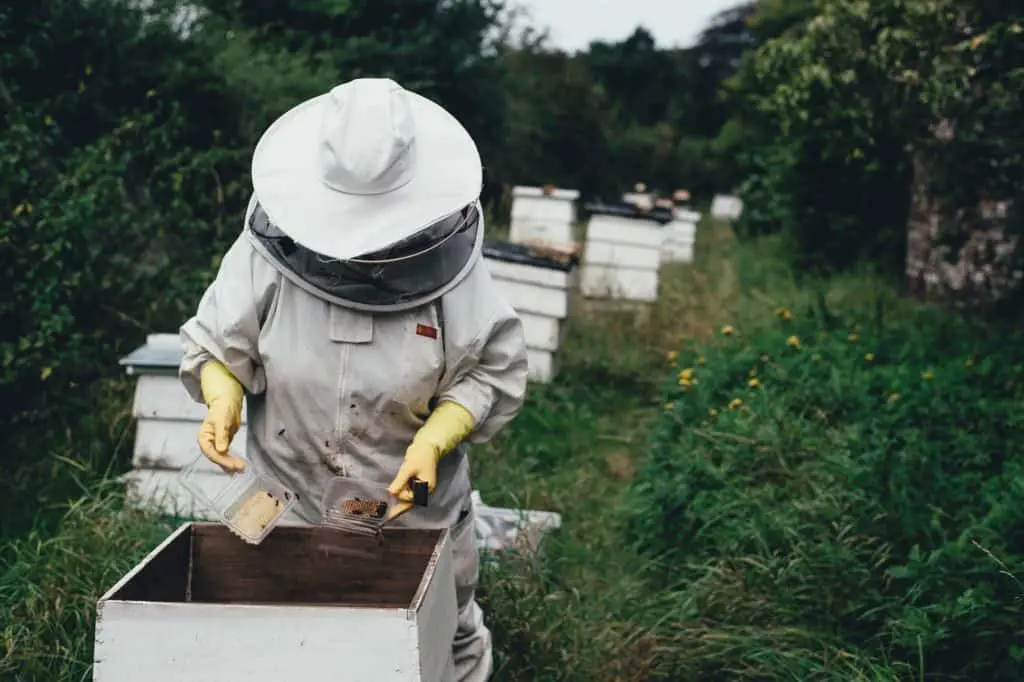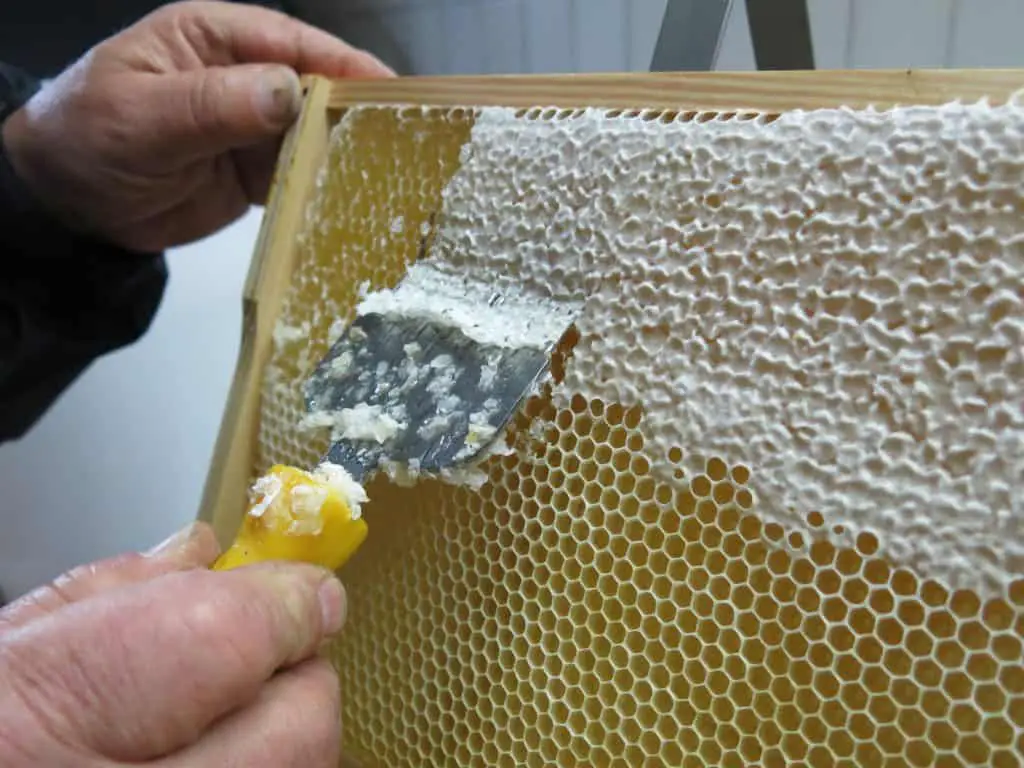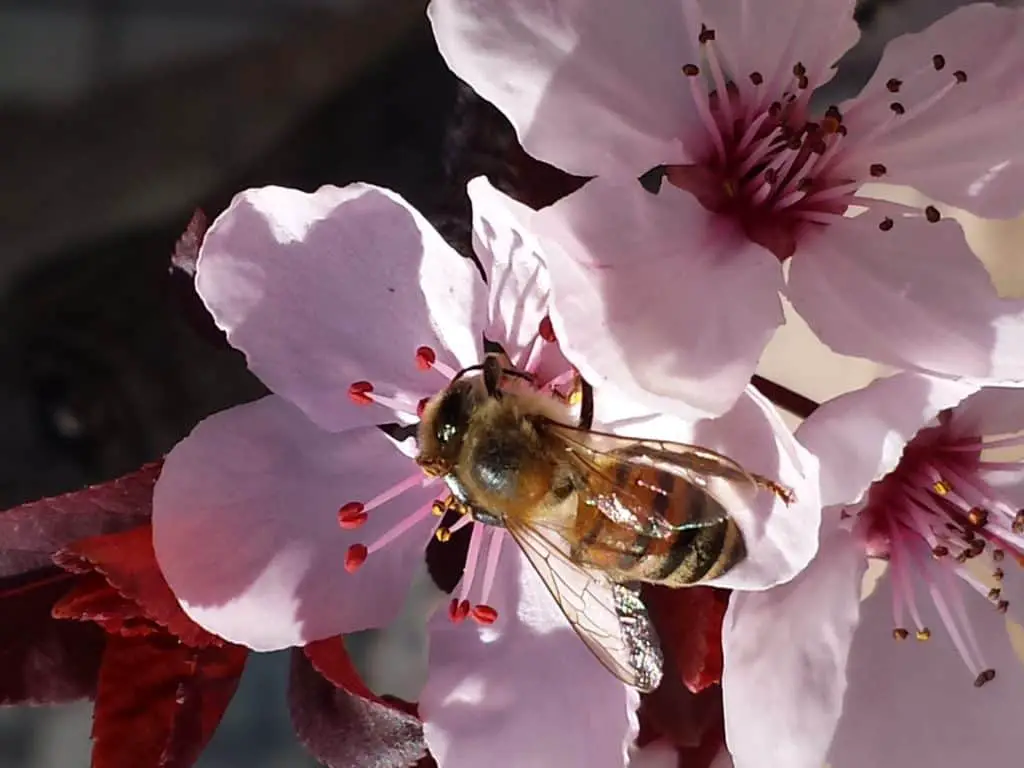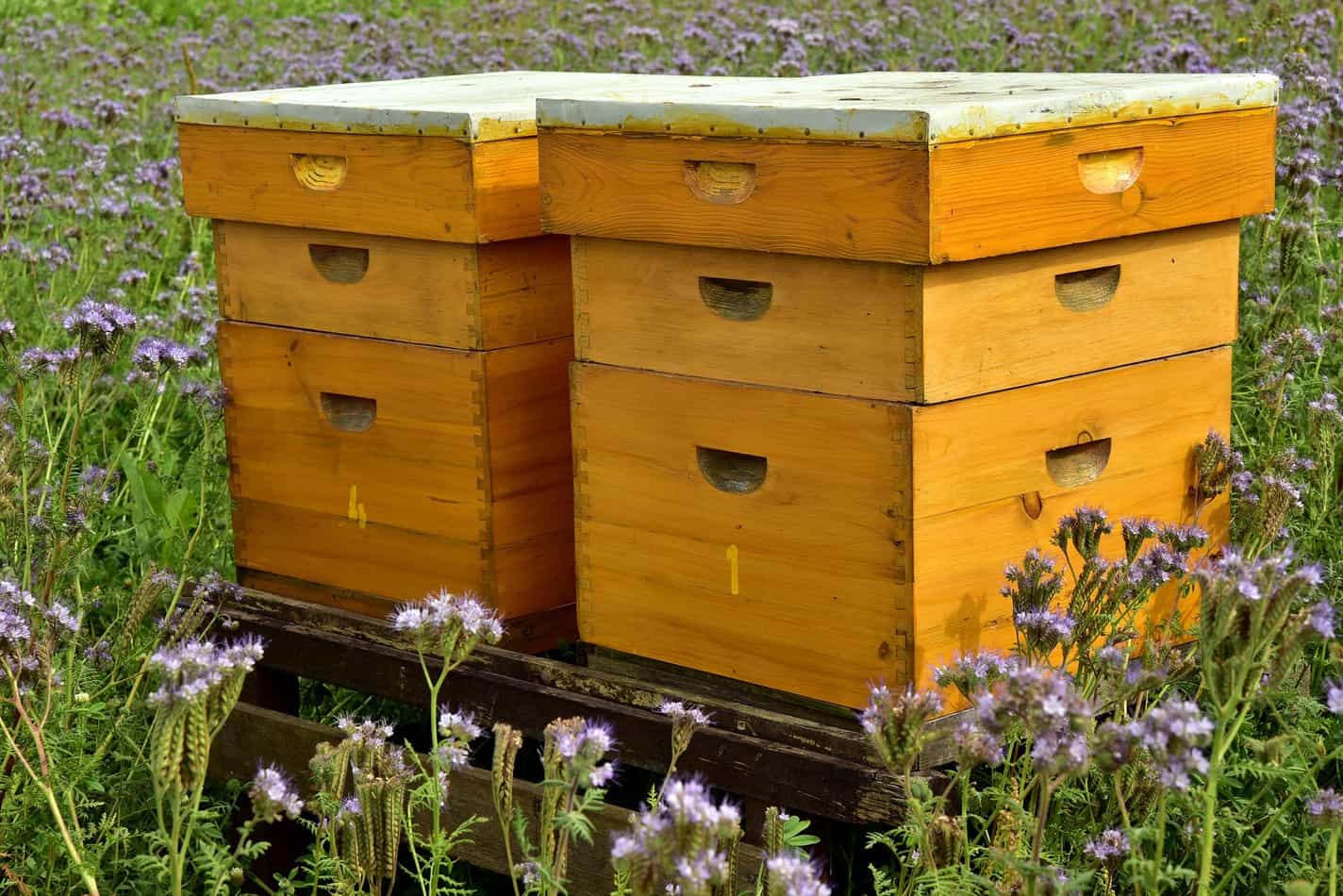It’ll likely cost you about $350 to get a hive up and thriving from scratch. If you are thinking about raising bees, it is important to know how much time and money it will take to get a hive up and thriving. This article sets out the bare minimum in both time and money you should expect to spend to get things started and running smoothly.
First off, beekeeping is obviously not free. There are several basic tools you will need to purchase, as well as the bees themselves. You are always welcome to attempt catching a swarm, or building your own hives, but this article will not cover either of those topics. Rather, this article explains in detail the costs you should expect to incur to purchase a bee package, hive, and tools to get started. Choosing all of the cheapest options, you should expect to pay approximately $350 for your hive, bee package, and beekeeping and honey harvesting tools. That said, our recommendations may call for a little bit better quality than the “cheapest” sources. Read on for more details on prices.
Do Your Homework

The first thing we recommend (before you buy anything else) is that you do your homework! There are numerous fantastic resources you can use to learn the ins and outs of bee keeping. You can take classes offered by your neighboring college, university, or state extension services.
Sometimes, the broker who sells bees will offer a discount on bee packages for those who enroll in a class. We highly recommend this option, as you will not only get fantastic knowledge from those who likely have raised bees in your geographic area, but you will also save a bundle on the tools you will need to start your own hive.
Another good option for learning about bees is to visit the local library. For beginning apiarists, we suggest you read “The Backyard Beekeeper” by Kim Flottum or “First Lessons in Beekeeping” by C.P. Dadant. You can also subscribe to one of the magazines geared towards beekeeping. We like “The American Bee Journal” or “Bee Culture”. Additionally, you may have access to a local Beekeeping Association. If so, these associations can be an invaluable resource for local information, and getting in on group orders of bees and equipment, or for borrowing equipment (like an extractor). You can find local Beekeeping organizations here.
Check Codes and Ordinances
Next, you will need to decide which kind of hive you want to use. Before you do this, you will want to check with your local city codes and ordinances.
You may find that there are certain areas not zoned for beekeeping, or that there is a limit to the number of hives you may be allowed to keep in a certain area. Don’t worry if your own housing zone doesn’t allow bees, often this obstacle can be avoided by keeping your bees on the property or pasture of a friend or relative.
Pick a good location

You will need to pick a good location for your beehive. Once you are aware of city ordinances and codes, you will also want to find a location that will allow the bees optimal gathering potential, with bountiful food and water sources nearby.
You will also need to keep in mind that the bees will want a clear flight path that is free of obstacles and constant human interruption. For instance, having your hives in a garden or small backyard is not ideal when it comes time to weed or harvest. We typically recommend that your hive has at least 25 feet of clearance from human or animal traffic on all sides.
Wait until Spring
The best time to start a new hive, or install a new bee package is early spring. Keep in mind that you may not want to start too early, as the risk of cold snaps can kill off your new hive before they have a chance to build up their stores and defenses. Spring is best because this is when bees are at their peak, collecting pollen and working hard to build a brood. This is also the time of year when blossoms open, offering the bees a fantastic source of food.
Provide Water
Bees will also need a good source of water. Bees need water to dilute their honey stores that may have crystallized (when honey becomes too high in glucose). Without water, bees will not be able to access sugar crystals as a food source. Additionally, bees need water to keep their hive cool and control the humidity of the hive environment.
Controlling the temperature inside the hive is critically important when raising a brood. Similar to human-designed air conditioning systems, bees place a thin layer of water above (or on the rim) of the sealed cell of the brood (baby bee cells) and other workers fan vigorously to create air flow and keep the larvae of the brood cool during the hot summer months.
Water is also important for the queen bee as she produces larvae, as well as the “nursing bees” who keep the larvae fed as they grow. So, as you choose a location for your hive be sure to set it up in a place that is within close proximity to water. Additionally, make sure that the bees have a way to escape the water should they fall in, such as sticks or floating twigs, string, or leaves.

Choose your Hive Style
Next, you will need to choose the type of hive you would like to use. There are three major hive types, and depending on how you choose to harvest, how much you can lift, the number of hives you wish to keep, your climate, and what kind of time you would like to invest in the process, not just any hive will do.
The three types of hive include the Langstroth Hive, the Warré Hive, and the Top-Bar Hive.
We highly recommend a Langstroth Hive for anyone beginning beekeeping, who isn’t particularly wanting one of the other types for a specific purpose. We recommend this because of the utility of the hive. The Langstroth is the most iconic or popular (the simple bee box), and the equipment is very standard. All of the components come in a standard size and shape, which means that you can find parts when you need them, and there are a plethra of tools and equipment available. Additionally, the Langstroth Hive is easy to harvest, with straightforward assembly and accessibility for harvesting.
Langstroth hives are also designed to maximize honey production, and allow you to move frames from one hive to another should you choose to do so. If you would like to compare the different aspects of Warré Hives, and Top-Bar Hives with Langstroth Hives, we recommend you read this article by Hobbyfarms.com.
Buy a Hive Kit
Regardless of the type of hive you choose, you can buy a hive kit, and we highly recommend this option as it is the least expensive and most straightforward option.
Though you can buy materials separately, you will save a good deal of money by buying the kit to begin with and supplementing your tools as you need them in the future. A Langstroth Hive will likely cost you $50-$70 depending on whether you choose a deep super (short for superstructure) or a medium super.
When beginning beekeeping, we recommend starting with a deep super. A deep super is a (9 5/8 inch tall box) used on the bottom of the hive. (On top of the foundation). You may be able to add medium supers (6 5/8 inches tall) on top of a deep super, but not vice versa. For this reason, we recommend you start with a deep super.
We buy our hives and bee packages through Olivarez honey bees (OHB) or one of their licensed brokers, and have also bought from Mann Lake, or Dadant but have bought most of our early hives as part of a package to get cheaper rates. If you don’t like these options you can purchase a deep super with frames from Home Depot for $59.87, or if you do some looking around (online or otherwise) you may find them for as low as $20. Keep in mind that it is a lot cheaper to buy the naked hive and paint it yourself with white paint or Tung oil before use. (Note: you paint the hive to protect it from the elements).
- You can check price and availability of a Langstroth deep super hive kit here.
It is important to note that beekeeping is different than harvesting from your bees. The kits for beekeeping will include only the tools needed to get the hive up and running as well as maintenance. You will need to purchase the tools for harvesting honey and or wax from your bees separately. We will set out the prices for each operation below.

Bee keeping tools and kits: If you were to buy a beekeeping tool kit set, you would likely get the following tools: (an uncapping fork, a hive brush, frame grip, hive entrance feeder, gloves, jacket, and veil, as well as a hive smoker).
These kits can usually be purchased for $30-$40 on Amazon if you shop around. However, we recommend you look at a complete hive set.
- You can check price and availability of a complete hive and tool set here.
With a complete hive kit, you not only get the super, but you also get the hive top, and hive foundation, as well as the tools you will need to maintain the hive throughout the summer, including the smoker, bee brush, hive tool, and frame feeder.
Typically, a kit like this will cost you $250-$275. On their own, each of these tools cost much more (and won’t include the hive, top, or foundation pieces). We have set forth the approximate costs in a table below:
| Beekeeping Tools | Cost Low / Cheapest | Cost High End / Better Quality |
|---|---|---|
| Uncapping fork | $4 | $29 |
| Hive brush | $7 | $12 |
| Frame grip | $3 | $9 |
| Beehive entrance feeder | $3 | $8 |
| Gloves | $10 | $23 |
| Jacket and veil | $40 | $100 |
| Hive smoker | $20 | $65 |
| Queen excluder | $3 | $7 |
| Total: | $90 | $245 |
When it comes to harvesting a product from your bees, obviously, honey is the most popular product harvested. Many apiarists also harvest capping wax, propalis, pollen, and bee bread from their bees. To learn more about bee bread, click here. To learn more about propalis, click here. To harvest any of these products you will need harvesting tools. Keep in mind that there are basic startup tools, and more advanced tools for the more serious harvester.

Some of the more expensive tools make harvesting much more convenient, and with experience you may choose to upgrade. For example, for your first harvest, you may choose to use nothing more than buckets, gate valves and strainers.
Later, you may want to upgrade to a honey extractor which can range anywhere from 2-frame hand crank extractors that typically cost $200 to electric 4-frame extractors that will cost you anywhere from $500-$800 depending on quality. We will set forth the prices of harvest tools below.
| Honey Harvesting Tools | Cost Low / Cheapest | Cost High End / Better Quality |
|---|---|---|
| Honey strainer | $14 | $42 |
| Frame holder | $10 | $26 |
| Beehive brush | $5 | $8 |
| Uncapping knife | $8 | $30 |
| Uncapping fork | $4 | $30 |
| Draining bucket | $4 | $4 |
| Totals | $45 | $140 |
| Hand Crank Extractors | ||
| 2 frame | $84 | $199 |
| 4 frame | $191 | $799 |
| Electric Extractors | ||
| 2 frame | $230 | $510 |
| 4 frame | $284 | $955 |
Which Bee Should I Buy?
Once you have done a good amount of research, assuming you are starting from scratch, you will want to decide which honey bee you should buy.
Read this extremely helpful article about the different characteristics of bee races. We highly recommend you read it before ordering your bee package. After reading it, you will see why we recommend you buy Saskatraz bees. They are a new bee breed, but they are proving to be more hearty, less aggressive, and better producers than the more common Russian, Italian, and Carniolian breeds.

(Photo credit Donna Silva)
Finally, you will want to buy your bee package from a reputable seller. Again, we recommend Olivarez Honey Bees, or OHB. You can link to their website here. If you don’t live near Northern California, you can buy through one of their regional sources. We buy through a regional dealer in northern Utah, and have had great success with them.
Installing your Bee Package
Finally, once you have your hive set up, and have bought your bee suit, tools, and bee package, you will be ready to install your package. For basic instructions regarding bee package installation, you can read this article, or watch this video.
Summary
Overall, you can expect to pay around $250-$350 to get a good productive hive up and going. Though you may choose to upgrade to more expensive tools, especially when it comes to honey harvesting. More than that however beekeeping is a hugely satisfying hobby. You will know you are doing your part to save the bees. (#savethebees). Additionally, your local flowers, garden, and foliage will do better as well with the increase of pollinators.

